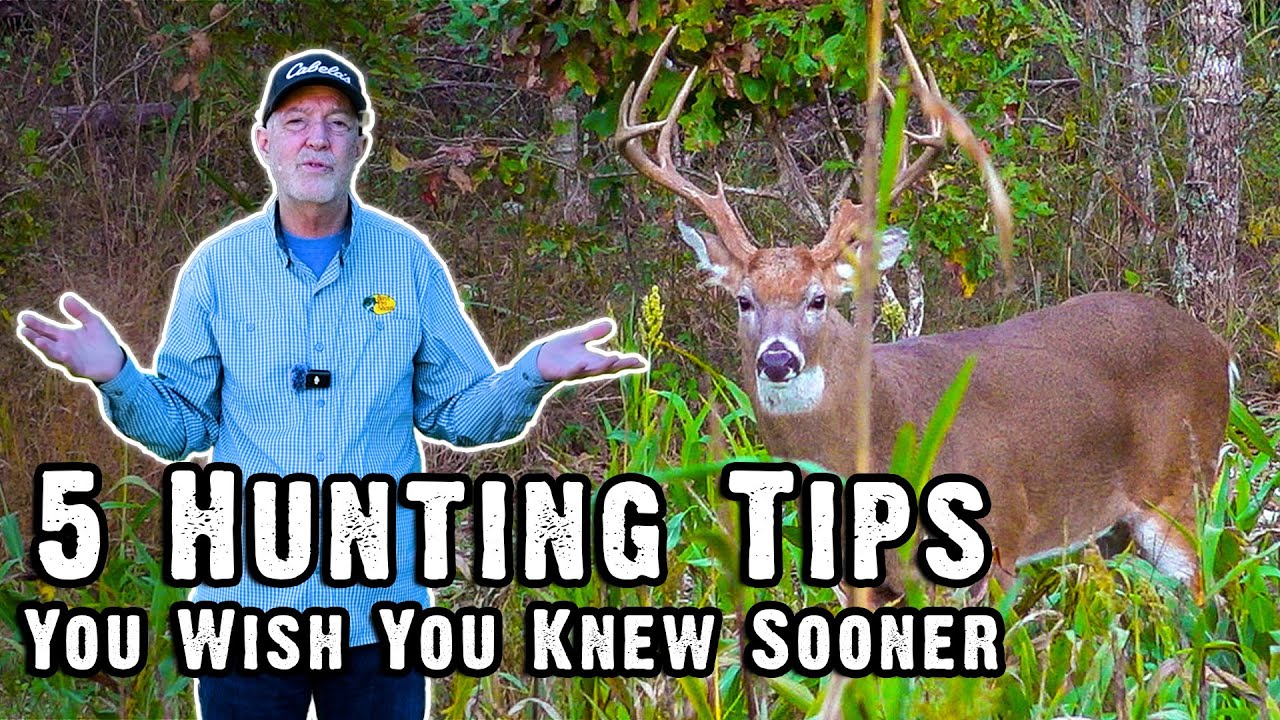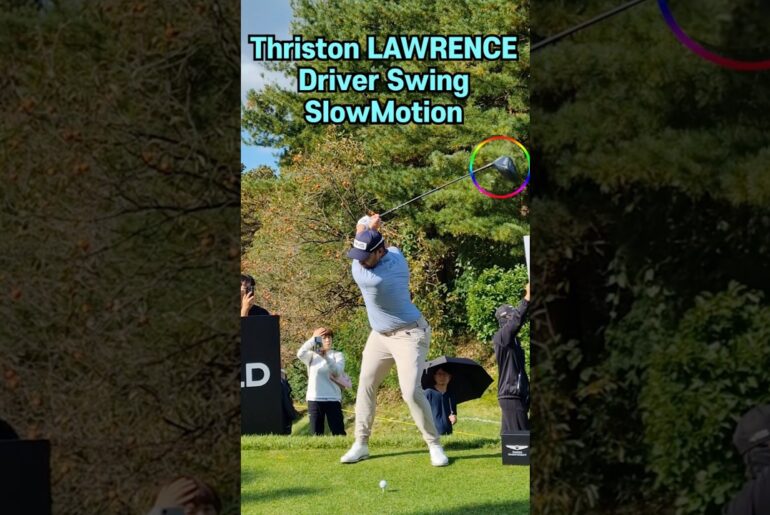Unlock the secrets to smarter whitetail hunting with five proven tips that can instantly improve your success in the woods. Learn how to think like a deer, hunt core areas effectively, play the wind and thermals to your advantage, and set up on high-odds travel corridors. These whitetail strategies will help you stay undetected, make better stand choices, and put more deer within range. Whether you’re after your first buck or a mature giant, these deer hunting tips will give you the edge this season.
@bassproshops @GrowingDeer
00:00 Intro
00:24 Think Like a Deer
02:28 Wind Direction And Thermals
05:52 Deer Sign
08:20 Feeding Areas
10:14 Alerting Deer
13:08 Outro
Success can be achieved much faster when we learn from other people’s mistakes. There’s no need of reinventing the wheel. And that’s certainly true when it comes to deer hunting. Here are five things I wish I’d learned much earlier in my career as a deer hunter to become much more successful hunter and bring more meat home for the freezer. The best hunting technique I can have is learning to think like a deer. Their number one driving instinct is survival. It’s more important to a deer to do things that allow them to survive than it is to find food or even participate in the rut. And that survival strategy is a lot different than what we humans think about because we’re not facing the same threats or fears daily. As an example, most humans get up in the morning, work, do whatever, go to school, and go to bed in the evening. Deer are just the opposite. Deer tend to rest during the day. They’re in thick cover. They’re doing stuff. They may move a little bit, but not much compared to morning and afternoon. And the afternoon is their morning. They’ve been resting, similar to us being at home in a safe environment. Then they get up and move to find food or participate in other activities. And in the morning when we’re up and fresh, we’re going to our stand. Well, deer are just the opposite. They may be going to get one more snack, but generally they’re moving towards that safe, secure bedroom, that bedding area where the wind’s swirling or something’s happening, and they feel protected from all directions from predation. Our mornings are a deer’s afternoon, early evening, and our afternoon is a deer’s morning. We can use that in a couple of ways. It’s tougher to find a good hunting location in the morning because you’re moving and deer moving. there’s a lot better chance of alerting deer. I’m an early morning person, but success rates tend to be better in the afternoon because you can go to your hunting location while deer’s in the safety of their bedding area and you can get in location and then let deer come to you. Researchers using GPS collars have shown that a lot of deer as they get older have smaller and smaller core areas which indicates they’ve learned where the threats are and they can go that core area maybe like our home or a storm shelter something like that to avoid the dangers. We can incorporate that also. We want to focus our hunting right on the edge of those core areas but in locations where we can approach hunt and exit without alerting deer. Point number two kind of ties into point number one. You notice I just said we can approach, hunt, and exit without alerting deer. That’s so important. Alert deer are very difficult to tag. So, we want to find locations to hunt where I can be and a deer can be without the deer being alerted. And the biggest thing to that is rarely deer seeing me. We learn how to cover, keep covering between us or camouflage, whatever. The biggest thing is their nose. That nose is really tough to beat. And deer use that nose every day to survive, find food, avoid predators, all these things. Understanding a nose really means we need to understand wind direction and thermals. Thermals is a term that describes the movement of air based on whether it’s warm or cold. Hot air rises. Think of a hot air balloon and they’re turning that heater on to make it gain altitude, to make that air rise. Cold air sinks. And when you want that hot air balloon to come down, they just turn the heater off, let that air cool down, and it will start dropping. The faster they cool that air, the faster the balloon sinks. So, obviously, they don’t want it sinking too fast. Well, the same is true with just air anywhere. I’m in the shade right now and it’s kind of drifting downhill. Right over here is a sunny spot and I’m sure it’s rising there. Warm air rises, cold air sinks. How does that apply to our hunting situations? Well, most of us hunt, you know, morning from sunrise to 9 or 10 and the evenings 3 or 4 hours before sunset. And during that time, thermals are going through a major transition. In the morning, it’s been cold all night or cooler and the air movement is consistently going downhill to the lowest spot. Whether you’re in flat land and downhill just a creek a couple of feet deeper or you’re chasing elk in the mountains and it’s really steep and that air is moving fast downhill and then the sun comes up and slowly starts warming up areas within the habitat zone 0 to 5 ft. You may be in the shade of a tree and the air is still wanting to slide downhill cuz cold air is heavy. It goes downhill. Right over here is the sun and warm air rises. If you’re in an area of mixed shade and sun, that can cause the air to churn and that gives a deer 360° protection from predators using her nose, which is a really good point. I want to find an area that’s predominantly all shade or all sun quickly so the air flow is going one direction and I can pick my location based on the movement of thermals. I would say thermals trump deer sign, especially if you’re a bow hunter because if the thermals aren’t in your favor, no matter how much sign there is there, it’s unlikely a deer is going to get in shot range. [Music] We’re all taught to scout and find deer sign, but what do we do with that when we find a deer sign? It sure seemed when I was a young hunter, the more sign, the more likely I am to see a deer. And I was discounting that I have to be able to be present to see the deer within range of whatever weapon I’m using. So, don’t just look for sign. Look for signs and location. and you can be there at the same time and not alert deer. It’s very rare that if you find just a huge amount of sign, man, there are scat piles everywhere, maybe beds everywhere, you found a bedding area, that you can be there at the same time deer are there. Deer tend to spend their most time, you know, in a bedding area or feeding area in places they feel secure. And their weakest link in the deer’s activity cycle daily is travel corridors. Going from bedding to feeding, as one example, somewhere along the way, they’re probably going to have to cross an area where the thermals or the wind or the visibility is not in their favor. We like to call those pinch points or bottlenecks. Somewhere where deer’s pinch down and it’s not in their favor and that travel is in a condensed area. Those now as a more mature hunter are my favorite hunting locations with a gun and a bow. Let’s take that one step further. If you’re hunting in the morning, you probably want to get as close to that bedding area as you can. So, there’s a chance those deer passing you going to the bedding area, okay, while it’s sunlight. If you’re really close to the feeding area in the morning, they may leave, especially mature deer, that feeding area, and move past your stand location, go into the bedding area before legal shooting light. The same kind applies in the afternoon. Deer, especially mature deer, may not leave the security of that bedding area or that security zone where the wind’s swirling until really close to dark. And if you’re positioned on the feeding area and they got to travel a quarter mile, they may not get there, especially mature deer, till after the end of legal shooting light. So finding that portion of the travel corridor where you can nudge in close to the bedding area is probably going to give you more opportunities to see deer during the legal shooting time. I mentioned feeding areas and I knew early on as a hunter that you know deer feed a lot that’s important but I didn’t really understand how important when I got in university system I realized that depending on the study and the time of year deer got to consume about 6 to 8% of their body weight a day I often just round that out at 5% depending on if it’s winter spring midsummer whatever so a 100 lb dough is going to need about 5 lb of forage a day if they’re feeding on forage. But that’s dry weight. They’re going to urinate, respirate, salivate all that moisture out, which actually means they’re going to consume about 17 lbs of forage a day depend on the rainfall to get that 5% of their body weight. 5 lbs of dryweight forage. If you think about going in the woods and picking one leaf at a time and getting 17 lbs, that’s a lot of hours. Deer feed a lot and they need to feed daily in most situations. So knowing the best food source where I have permission to hunt or even close by is real important to my hunting strategy. And again, I may not hunt over that food source, but that’s a destination area that travel corridors are going to. Even more important than the best food source, maybe you’re in a country and there’s soybean fields all over, is a food source that deer do not associate with danger. They’re not conditioned to only feeding there at dark or avoiding the area totally. So, you may hunt in an area and you know, you don’t get to hunt till late season. You only got a few times to hunt in early season. You may avoid hunting around those food sources. And when hunting pressure gets big in the other areas, they’re going to pour into that area, that’s quality food and they also feel secure feeding there. If I know where there’s a prime feeding area, especially if there’s a lot of hunting pressure in the neighborhood, I want to be very careful around that. I definitely only want to hunt travel corridors coming and going to and work really hard not to alert deer so deer feel very comfortable feeding in that area. They consider it a secure location and when that’s the case, deer are going to pour into that area. You know, deer have memory. I think we forget that as humans. Deer have memory and they learn to avoid areas that they associate with danger. On the other hand, deer have memory and they learn that some things are not a source of danger to them. Think of deer on a golf course. Sometimes in some golf courses, the deer won’t get out a fairway for the golfers to play through because they just don’t associate them with danger or along major interstates. And you see deer feeding right there on the interstate with bunches of cars driving by because they don’t associate that noise, those smells, all that movement with danger. But if you’re in an area where deer rarely see humans and they smell you or see you moving, man, they’re out of there. So you need to really think, okay, I’m on a farm and this farmer is all over the place, this buggy all the time feeding cows, checking on cows. If you could get that farmer to drop you off at your hunting location, that is way better than you walking all the way through the farm and they’ve never smelled you and the farmer probably doesn’t get off his buggy that much in that location deep in the woods. He’s out in the fields working and you can really send those deer on high alert. So, it’s different no matter where you are. A lot of military bases allow hunting and those deer are really used to loud noises usually depend on the base and a lot of things. I want to do things that the deer do not associate with danger when I’m going to my stand or in my hunting practices and I want to avoid things that deer do associate with danger. When I was young I hunted public land actually a walk-in only area called Piney Creek National Forest. And man, I would just walk, walk, walk, walk, walk, walk and rarely saw deer because very few people hunted that area because it was walk-in only. They wanted somewhere they could get to easier. I’d have been so much better to apply these five techniques, you know, know the thermals, know the food sources, maybe some white oak somewhere. put all that together, find the travel corridors, the bedding areas, the food source, and really work not to alert deer rather than the week before season go walk every ridge and valley in the whole area, send the deer on high alert and wonder why I wasn’t seeing deer. I’m very confident that if you will apply these techniques and strategies to your hunting this fall, you’ll be putting a lot more meat in the freezer and having a very successful season. Learning strategies and techniques about deer hunting is certainly fun and important. I love consuming that fresh protein. But learning strategies and techniques how to live a good life is even much more important. And we learn those not from our own experiences, but from the creator, the creator of the entire universe and studying his word and applying it to our life. Thanks for watching Growing Deer.








10 Comments
Grant,love the videos and knowledge you share with all of us. You are a bundle of information,and I personally appreciate you sharing your research and 1st hand accounts with all of us.
Grant, you are a first class gentleman and a fantastic hunter/teacher. Above all, glad to call you a brother in Christ. God bless you and your family!
I try to hunt different locations if I am hunting several days in a row, or the deer will start patterning ME.
So I want to hunt in the mornings majority if my thermals are going up, I would like a good example of when the thermals would be in my favor as the air is cooling down and pushing my scent down ?
4 year old + bucks are elusive.
#1 thing i have learned in over 45 years of bow hunting is NEVER shoot at at a walking deer. ALWAYS stop them.
Great information! The WI season starts in less than 2 weeks. Bring it on! Thanks for the reminders. Good luck this year!
Great stuff. Thanks
Thanks for using your platform to be a witness for Jesus
Headed out tonight!